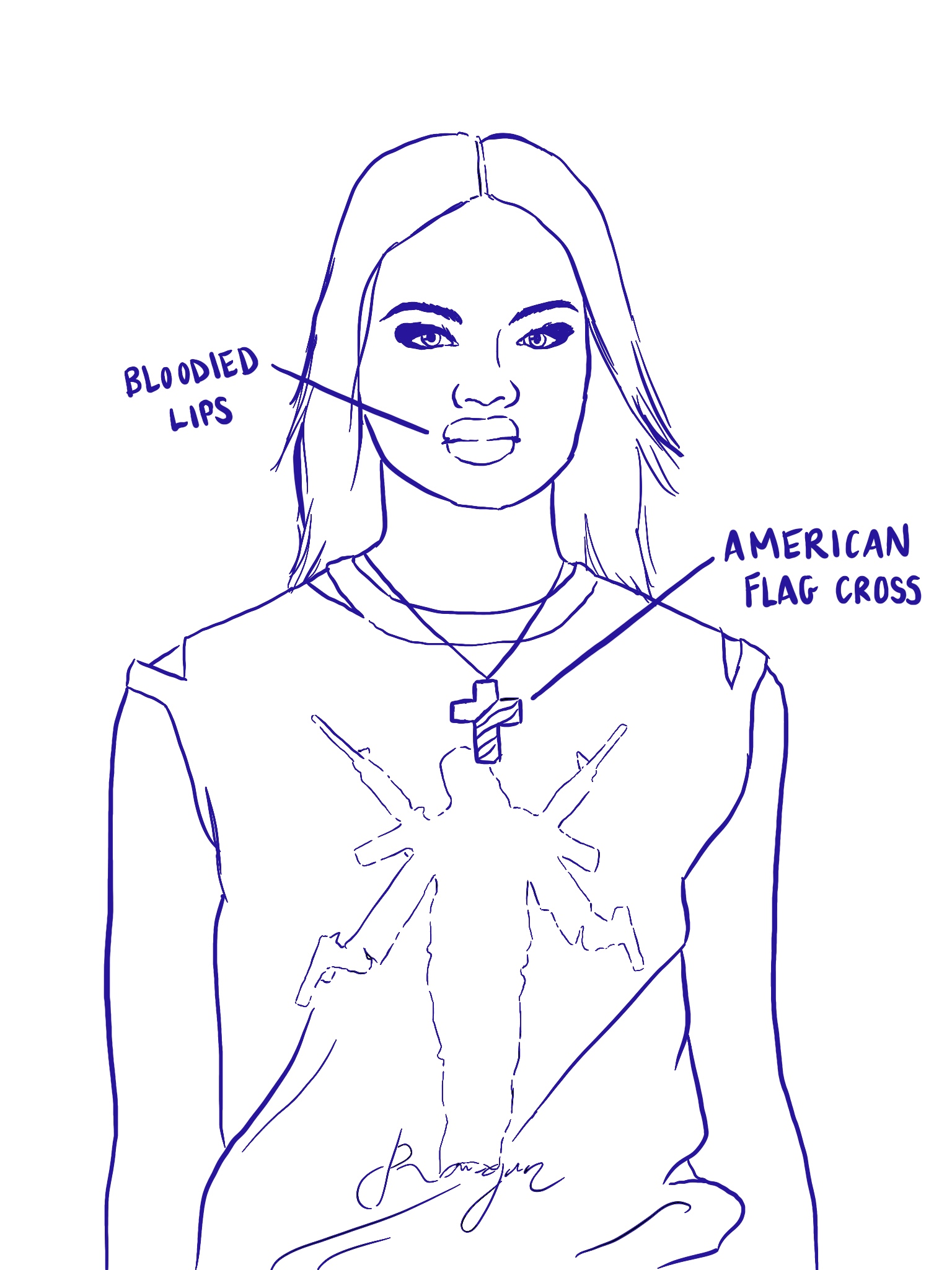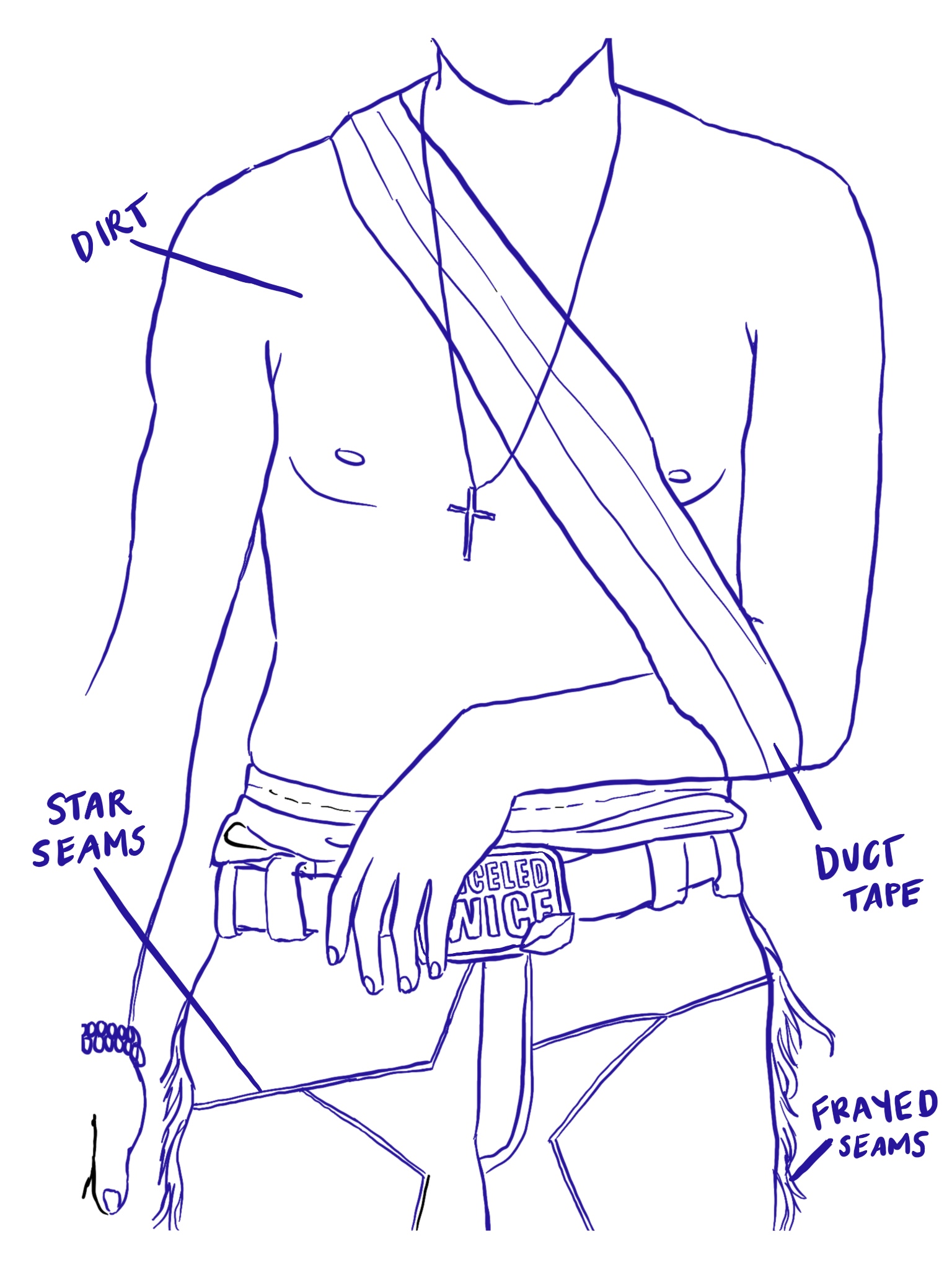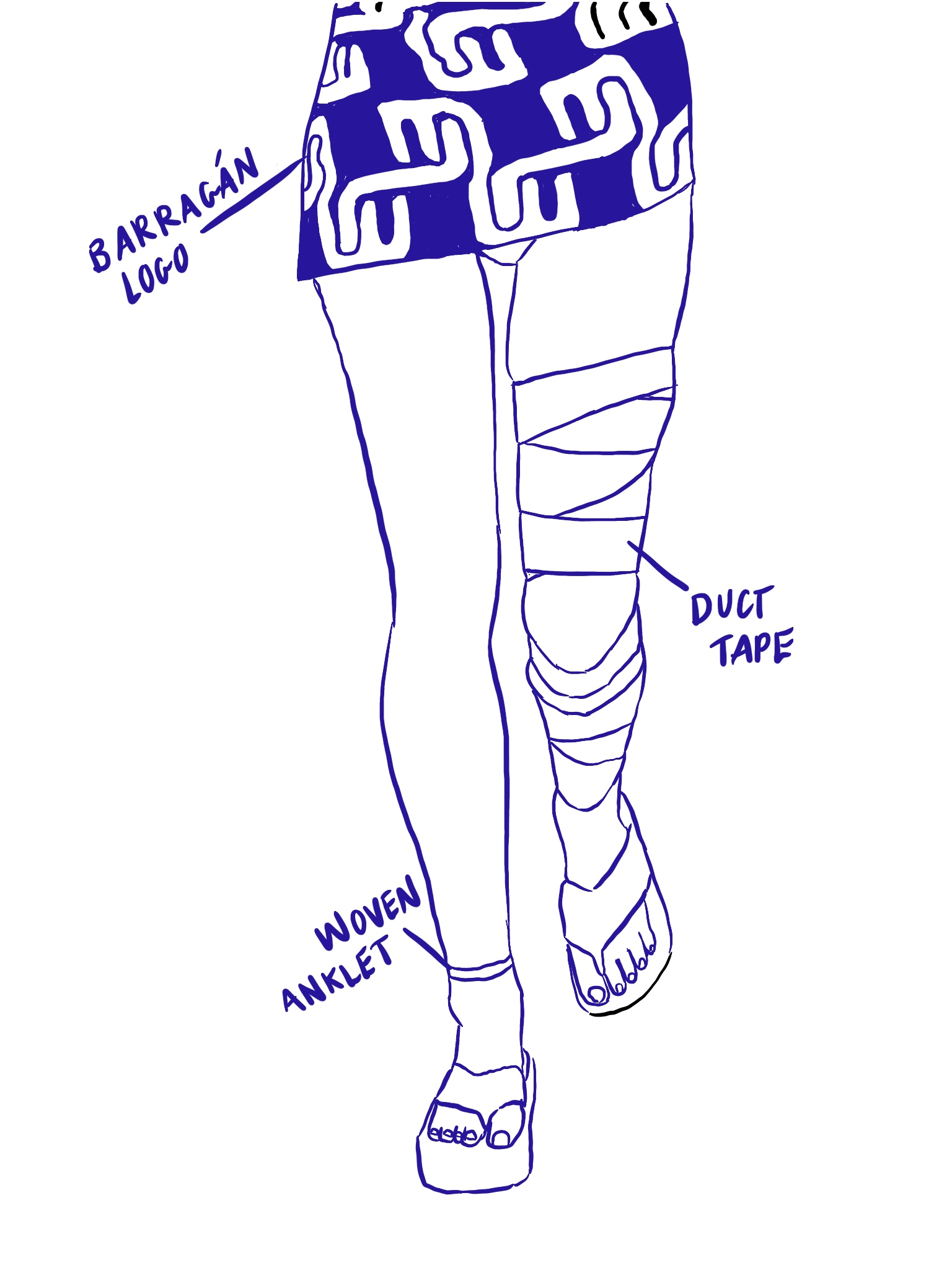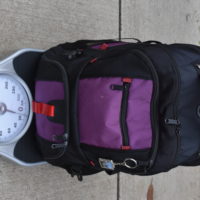
A graffitied porta-potty holds the attention of idle viewers, standing behind what look like concert barricades. The runway, if you can call it that, is littered with trash and printed money. Dollar bills hang from the ceiling and fill trash bags, creating an ambiance of tacky faux wealth.
Out of nowhere, the porta-potty door flies open. A model with an extreme mullet and red circles under his eyes comes strutting out, setting a precedent for the rest of the show’s unconventional cast of models. His sweatshirt’s camouflage print clashes with the corresponding camo featured on the pants, and a belt buckle reading “Meth” in the New York Mets logo emerges as the focal point of the outfit.
New York Fashion Week is a spectacle to behold. Runways with emaciated models represent the works of designers all competing to have the most avant-garde, talked-about looks of the season. Journalists, fashion critics and giddy influencers look on with crossed legs and furrowed brows. With the concentrated media presence, this time is vital for up-and-coming designers hoping to breakthrough into the New York City fashion scene.
One of those designers: Victor Barragán.
The most glaring feature of his most recent show is the all-white cast of models. This was an intentional choice made by Barragán — a subversion of the tokenized diversity seen on many current runways. Moreover, these are not your average high fashion models. They’re dirty, with ages seeming to range from 18 to 60. Many are adorned with tattoos, an uncommon look for editorial models whose primary goal is to show off their clothes. In past shows, models have been sent down the runway with hickeys, smudged makeup and intentionally awkward combinations of the kitschy and the classy.
 In an industry with a hyper-obsession with visual appeal, the use of unconventional models is a statement in and of itself. The fact that Barragán seems to have little regard for the traditional beauty of his models is fascinating, to say the least.
In an industry with a hyper-obsession with visual appeal, the use of unconventional models is a statement in and of itself. The fact that Barragán seems to have little regard for the traditional beauty of his models is fascinating, to say the least.
The collection creates a deconstructed parody of “white trash” America. The looks that have the potential to appear traditionally high fashion, are pulled apart by Barragán’s ingenious styling. One example is a leotard reminiscent of Jean Paul Gaultier’s unitards from his Fall 1995 collection. The put-together nature of the leotard is quickly disassembled by an exposed, pierced nipple peeking out of a cutout.
Barragán often reconceptualizes and satirizes American fashion with an air of ironic absurdity, addressing, as Vogue describes it, “race, queerness, immigration, sex, and more; always with a sense of humor…” Text, saying things like, “HOMOPHOBE,” “WHITE TEARS,” “SEX” and “J’ADORE UR HOLE,” decorate hats, belt buckles and shirts. He references both the prominence of sexual misconduct as well as the hostility towards queer people in professional settings. This dichotomy creates a statement on the abuse of sexual power at the hands of white men in the workplace. Barragán utilizes fashion design as a vessel for social commentary, formulating art pieces that speak to the current zeitgeist in the 2023 Ready-to-Wear collection.
As has been shown in the recent fascination with subversive basics, deconstructed clothing is a facet of current fashion. Barragán executes this well, demonstrating a clear understanding of the principles of design. I believe that a well-assembled yet unraveled outfit often requires more of an eye for styling than a tailored, finished-feeling piece may.
All too often, we see high fashion brands co-opting aesthetics of the working class, which Barragán mocks relentlessly in this collection. One shirtless model is covered in dirt, with stringy hair and a tobacco-filled lip. He wears a makeshift sling made of duct tape that only adds to the intersection of class that Barragán examines in his work.
 Barragán, himself, grew up in poverty, working as a teenager at his father’s taqueria in Mexico City. His initial introduction to the world of fashion was born out of his need for clothing, giving him the unique ability to comment on classism in the industry. He shows an understanding of the patterns and fabrics that emulate perceived poverty in America, and utilizes those to make a mockery of brands engaging with this appropriation.
Barragán, himself, grew up in poverty, working as a teenager at his father’s taqueria in Mexico City. His initial introduction to the world of fashion was born out of his need for clothing, giving him the unique ability to comment on classism in the industry. He shows an understanding of the patterns and fabrics that emulate perceived poverty in America, and utilizes those to make a mockery of brands engaging with this appropriation.
Barragán’s work is not only disrupting the New York fashion scene but igniting interest in the thriving works of Mexican designers and artists. Clouded by anti-immigration-based bias and xenophobia, Mexico is overlooked in our conversations surrounding international fashion. By utilizing his own experiences and unique perspective he creates an authentic statement about the intersections of poverty, fashion and elitism in America.




